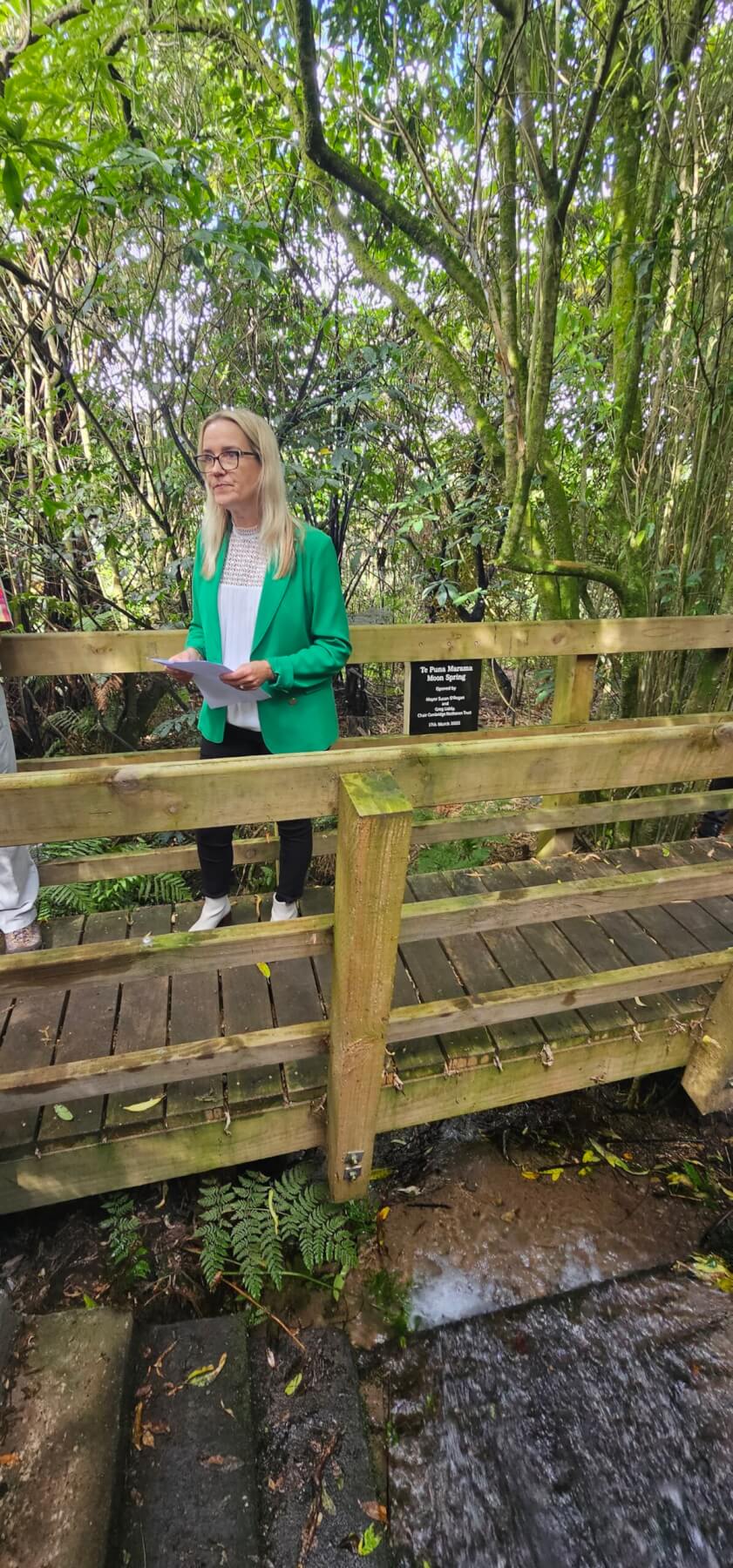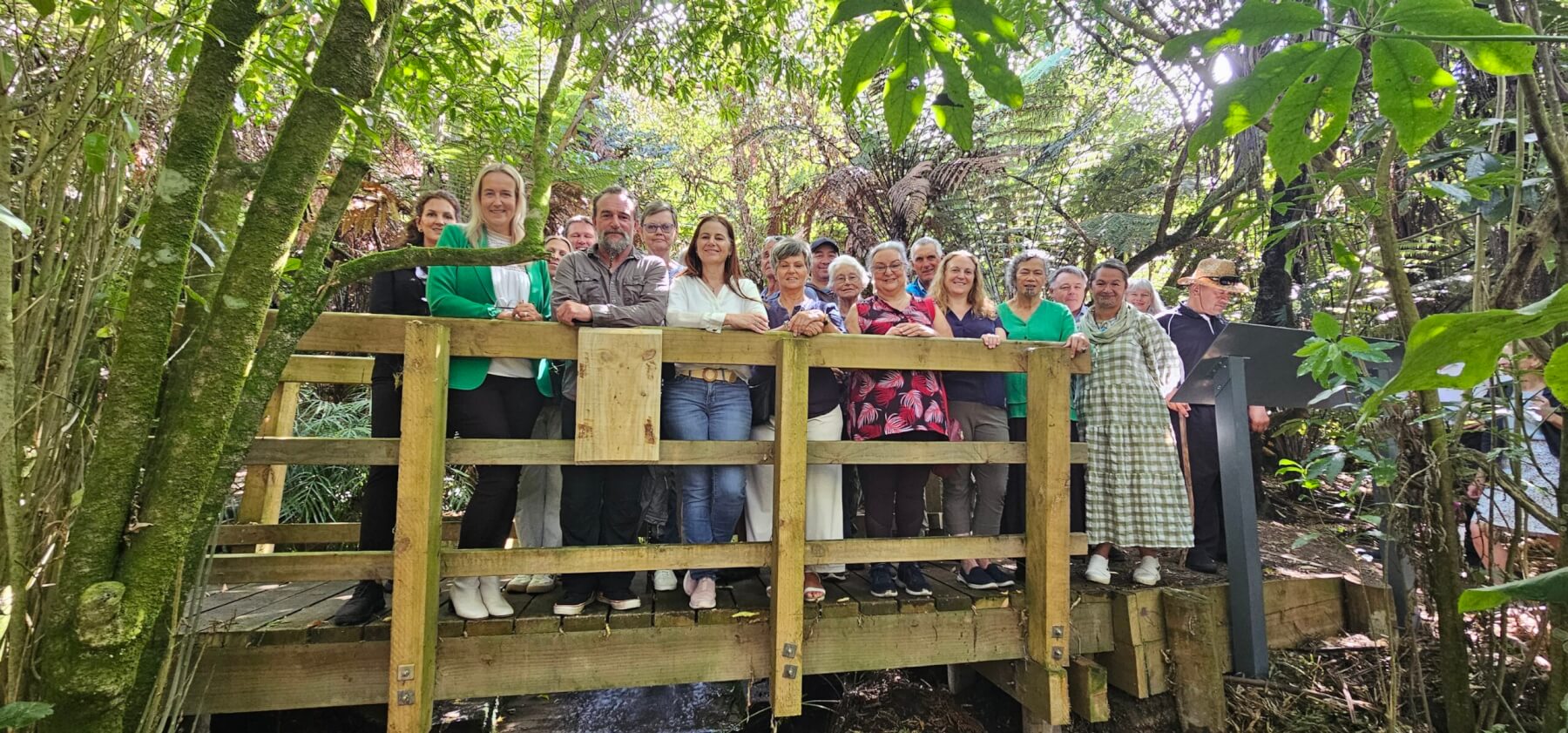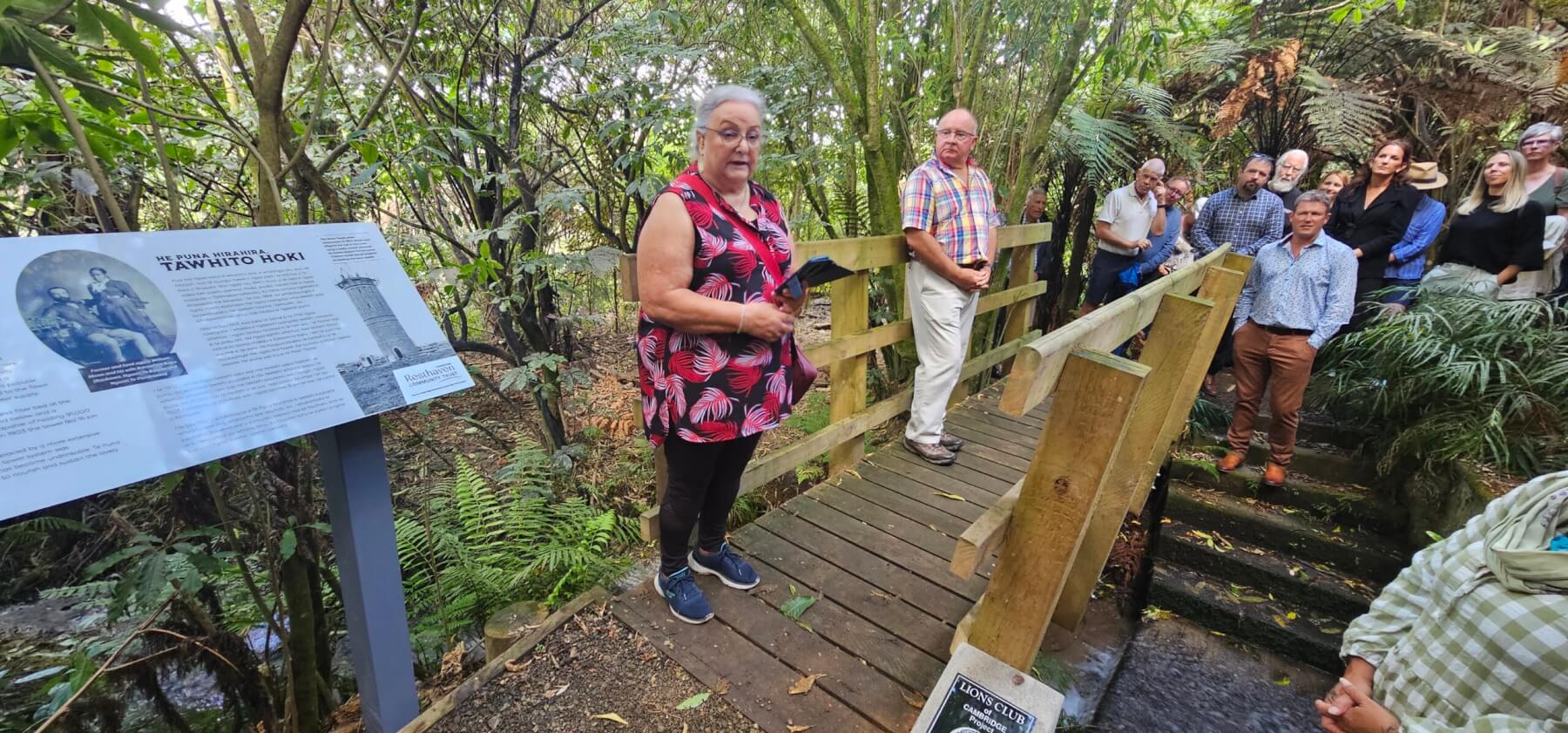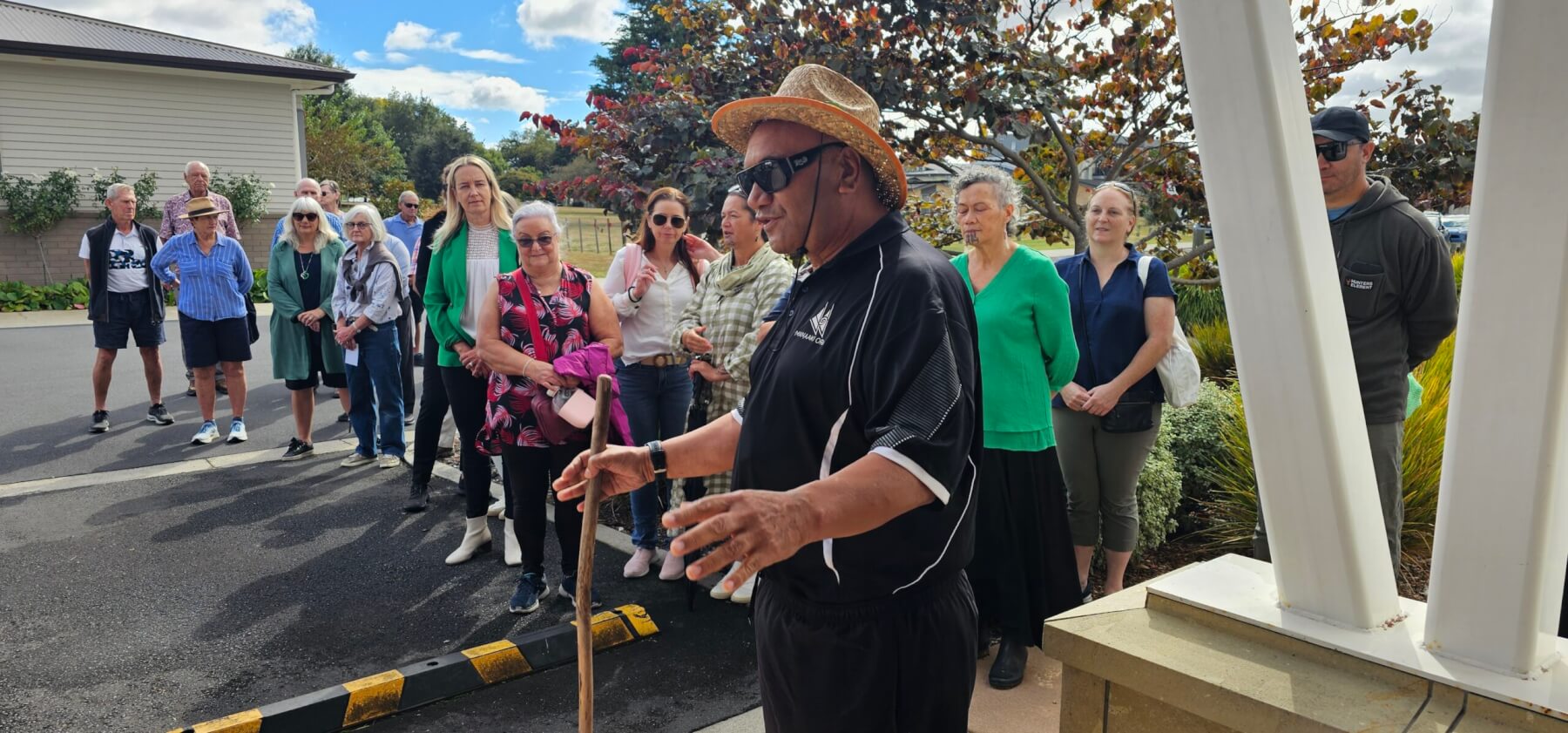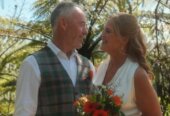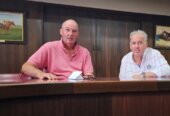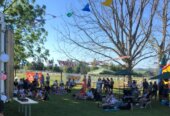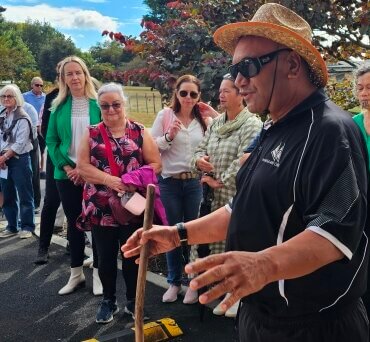
Ngāti Korokī Kahukura kaumatua Vincent Taute
A decade of voluntary bush clearing, plant growing, path construction, building bridges and installing retaining walls was honoured with the official opening of Te Puna Marama in Cambridge on Monday.
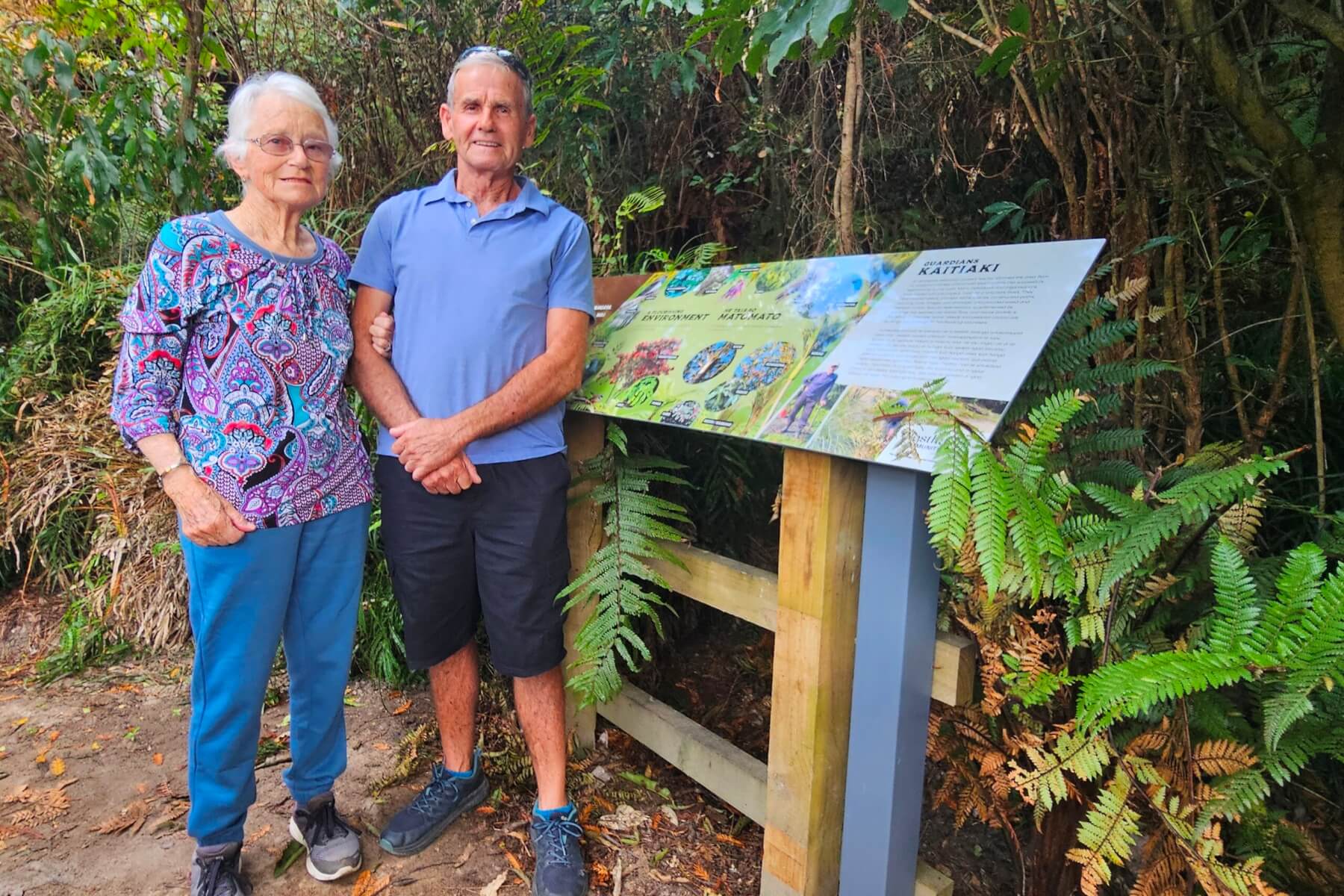
Merle Whittaker and Bill Christensen in front of a board dedicated to the work of the kaitiaki (guardians) of the land. Photo: Mary Anne Gill.
Representatives present were from Ngāti Koroki Kahukura and Ngāti Hauā, along with descendants of William Moon, the man whose surname was in popular use for decades until the spring was hidden by vegetation.
Twelve years ago, when Resthaven Trust Board bought a block of land south of The Views on Vogel townhouses, they discovered Moon Spring again and launched a restoration project.
With help from Rotary, Lions, Riding for the Disabled, David Wallace, the Tree Trust, Cambridge Historical Society, Predator Free and Waipā District Council, the area now features walking tracks which meander around native trees and plants leading to a bridge over the spring itself.

Waipā mayor Susan O’Regan and Resthaven board chair Greg Liddy unveil a plaque on the bridge. Photo: Mary Anne Gill
Waipā mayor Susan O’Regan and Resthaven board chair Greg Liddy unveiled a plaque on the bridge.
“This land has been a special place for Ngāti Korokī Kahukura, Ngāti Raukawa and Ngāti Hauā and wider iwi for many generations,” she said.
“This spring nourished their ancestors and sustained the people of this land long before European settlers came here.”
The land was confiscated during the Land Wars and the legacy of the injustice, the upheaval and hardship that followed was something that affected the community still, said O’Regan.
When Cambridge became a military post, the water was used by settlers and soldiers.
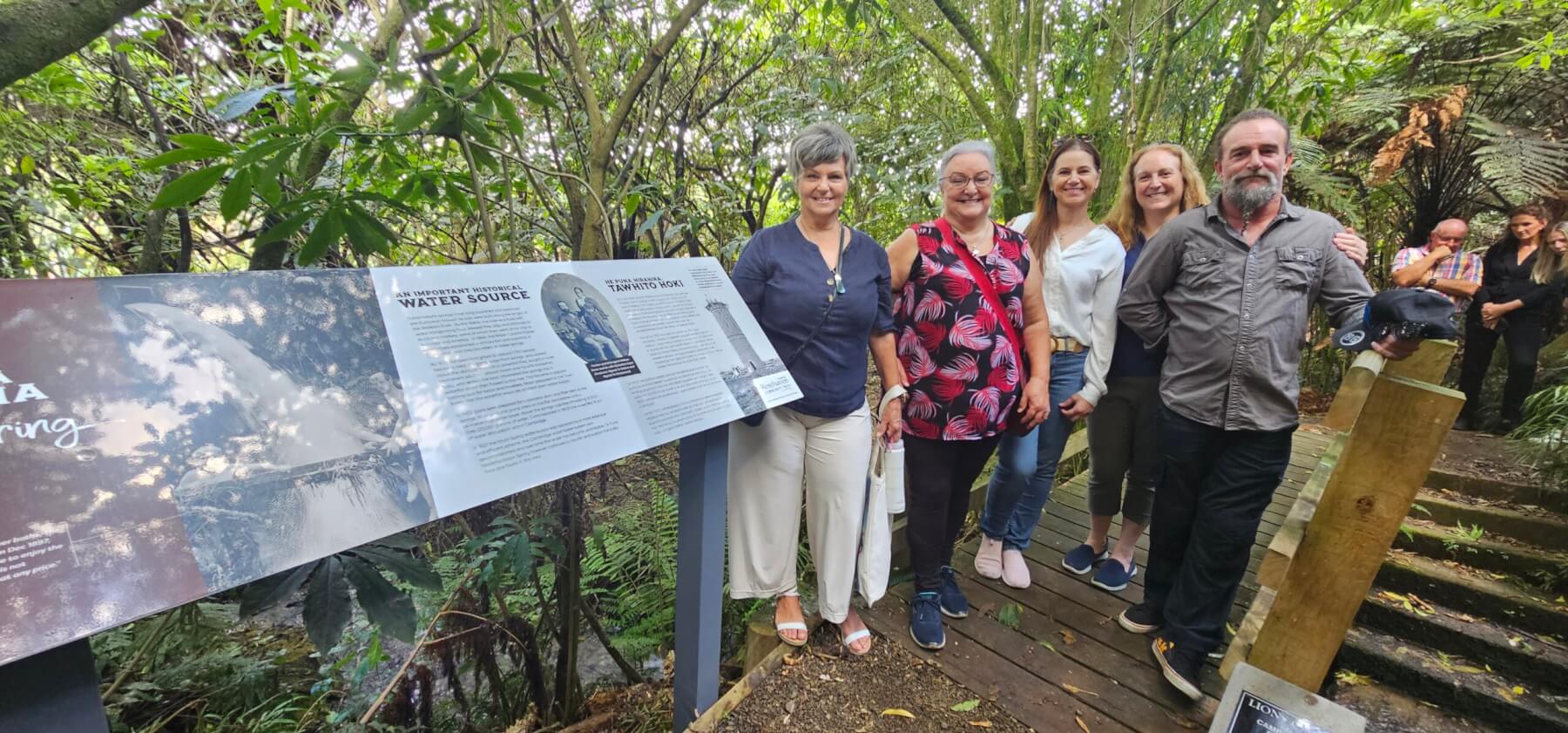
Descendants of William Moon present at the ceremony at Te Puna Marama are, from left Donna, Pauline and Angela Moon, Lisa McNabb and Wayne Dykins. Photo: Mary Anne Gill.
In 1901, William Moon and his wife Karawhira Kapu (Ngāti Raukawa), who leased the land, channelled the spring into a waterfall which became a popular swimming spot for locals.
His great granddaughter Pauline Moon and Waipā Māori ward councillor Dale-Maree Morgan unveiled a board featuring photos of residents swimming in the water and a photo of the water tower outside Resthaven.
The tower became operational in 1902 and used water from the springs to supply the town until it was decommissioned in the 1920s after it was discovered the water was polluted.
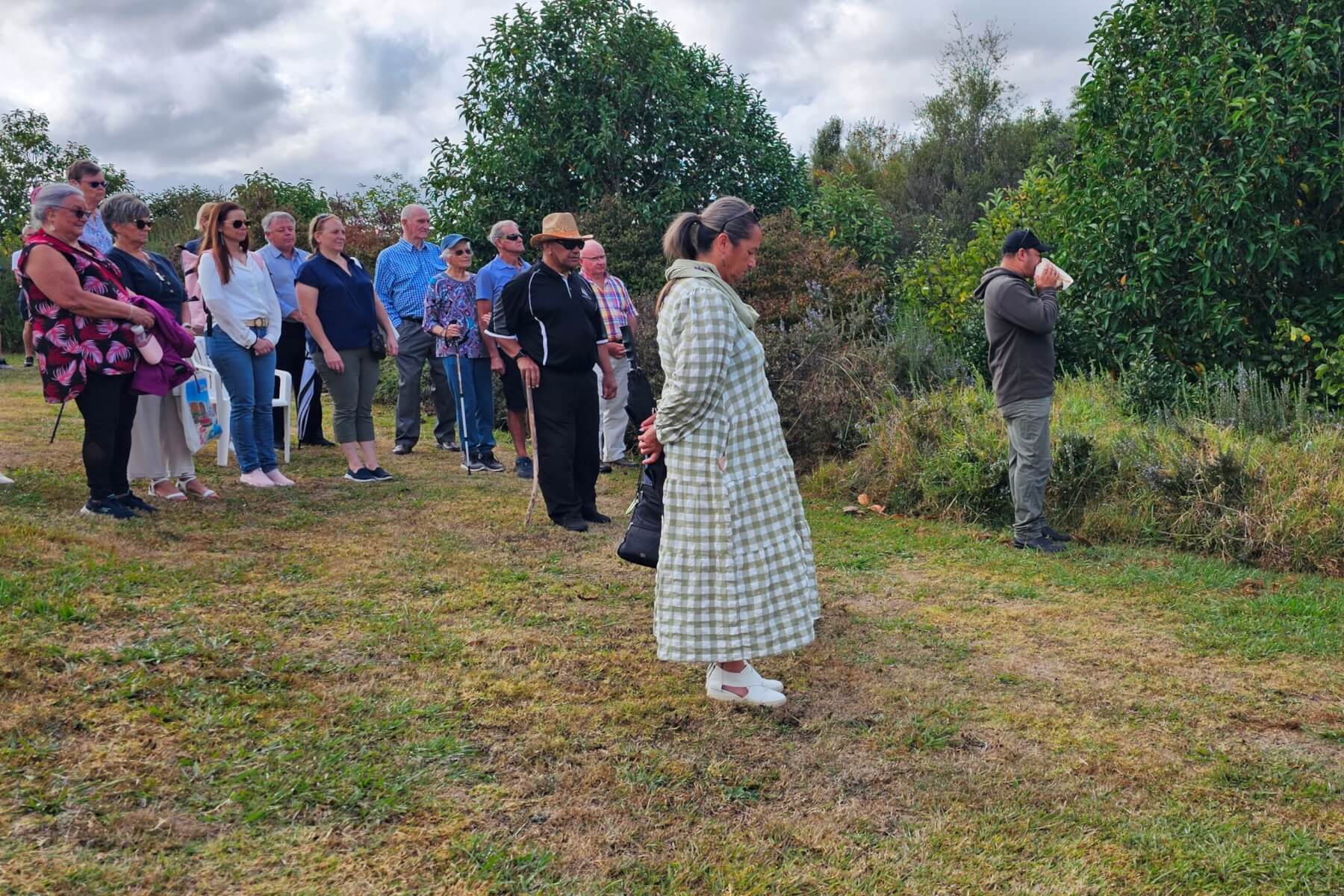
Ngāti Korokī Kahukura kaumatua and kaipuoro Ricky Winikerei signals the start of the blessing with a conch shell watched by invited guests including kaumatua Vincent Taute and Waipa Maori ward member Dale-Maree Morgan. Photo: Mary Anne Gill
In the intervening period the spring and the tower became a tourist attraction with evidence of several tracks present when the restoration project began in 2013.
The area around the springs became an overgrown and neglected expanse which was now “a vibrant flourishing sanctuary for many native plants, wildlife and our community,” said O’Regan.
Another board dedicated to the guardians of the land featuring Resthaven resident Bill Christensen was unveiled by him and his partner Merle Whittaker.
Access to Te Puna Marama is from Te Awa Walkway and marked by the first sign – unveiled by former Resthaven Trust chair Sarah Barns-Graham and chief executive David Hall – which describes the area as He Kura Huna (a hidden gem).
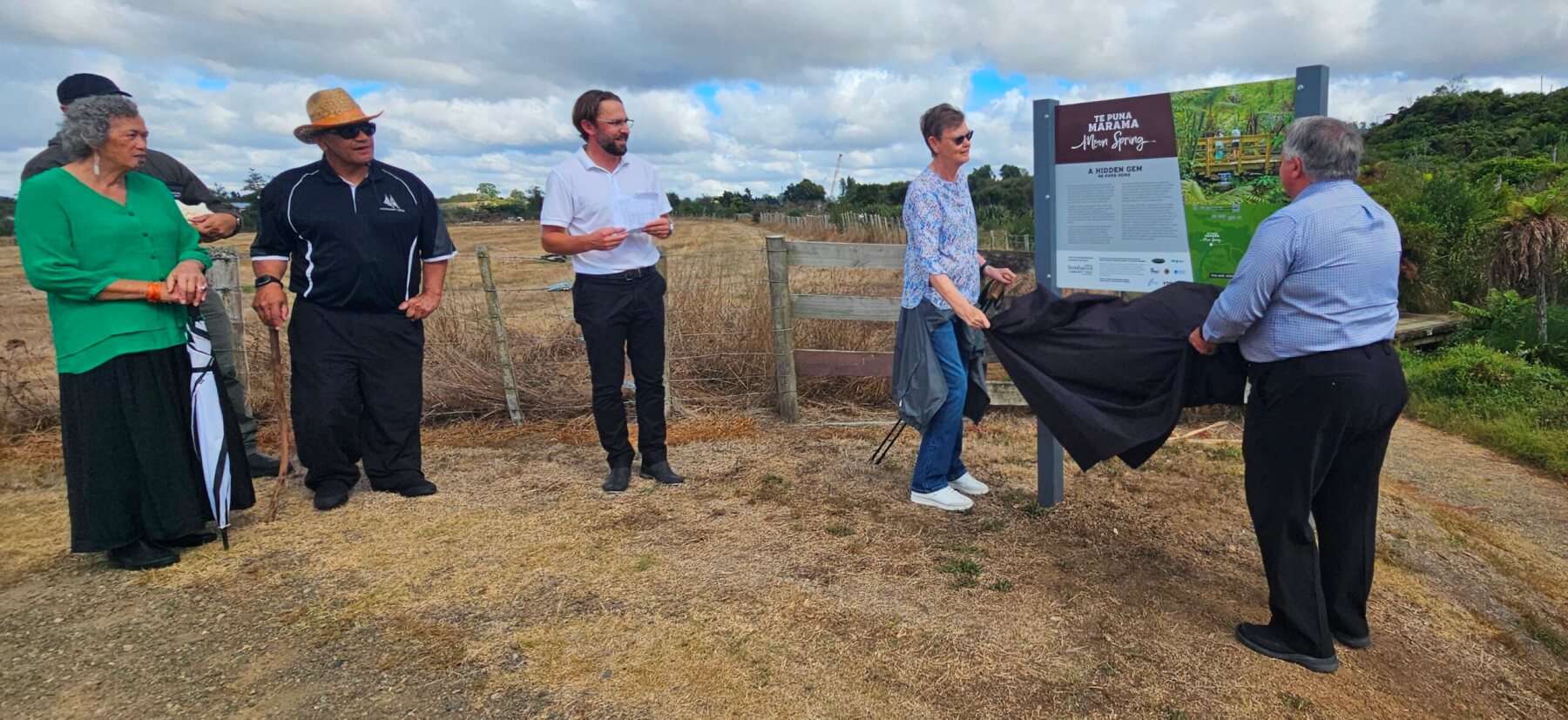
Access to Te Puna Marama is from Te Awa Walkway and marked by the first sign – unveiled by former Resthaven Trust chair Sarah Barns-Graham and chief executive David Hall – which describes the area as He Kura Huna (a hidden gem).
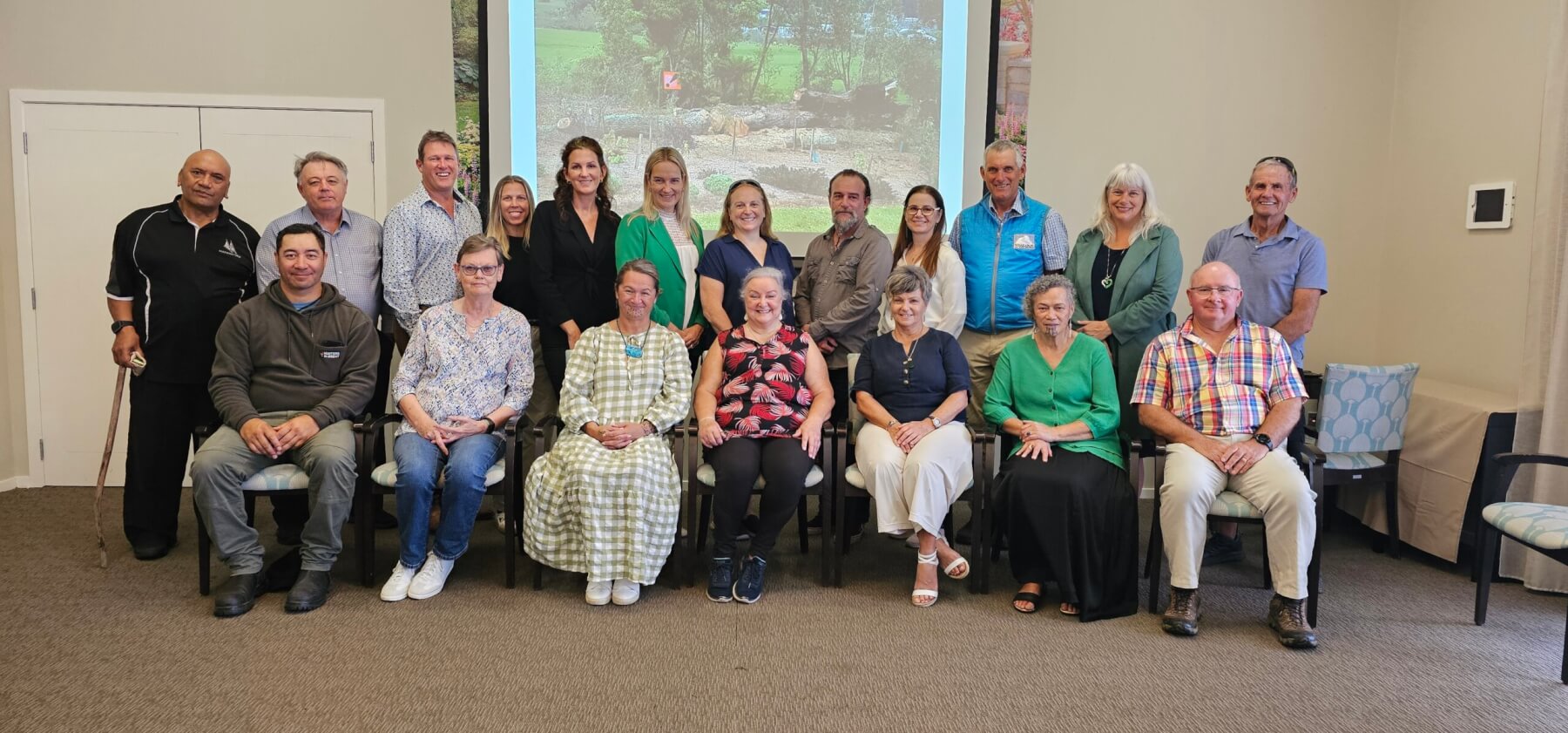
After the ceremony, from left back row: Ngāti Korokī Kahukura kaumatua Vincent Taute, David Hall, Mike Pettit, Elise Badger, Jo Davies-Colley, Susan O’Regan, Lisa McNabb, Wayne Dykins, Angela Moon, Phil Coles, Liz Stolwyk, Bill Christensen. Front Ngāti Korokī Kahukura kaumatua and kaipuoro Ricky Winikerei, Sarah Barns-Graham, Dale-Maree Morgan, Pauline and Donna Moon, Poto Davies, Greg Liddy. Photo: Mary Anne Gill.



